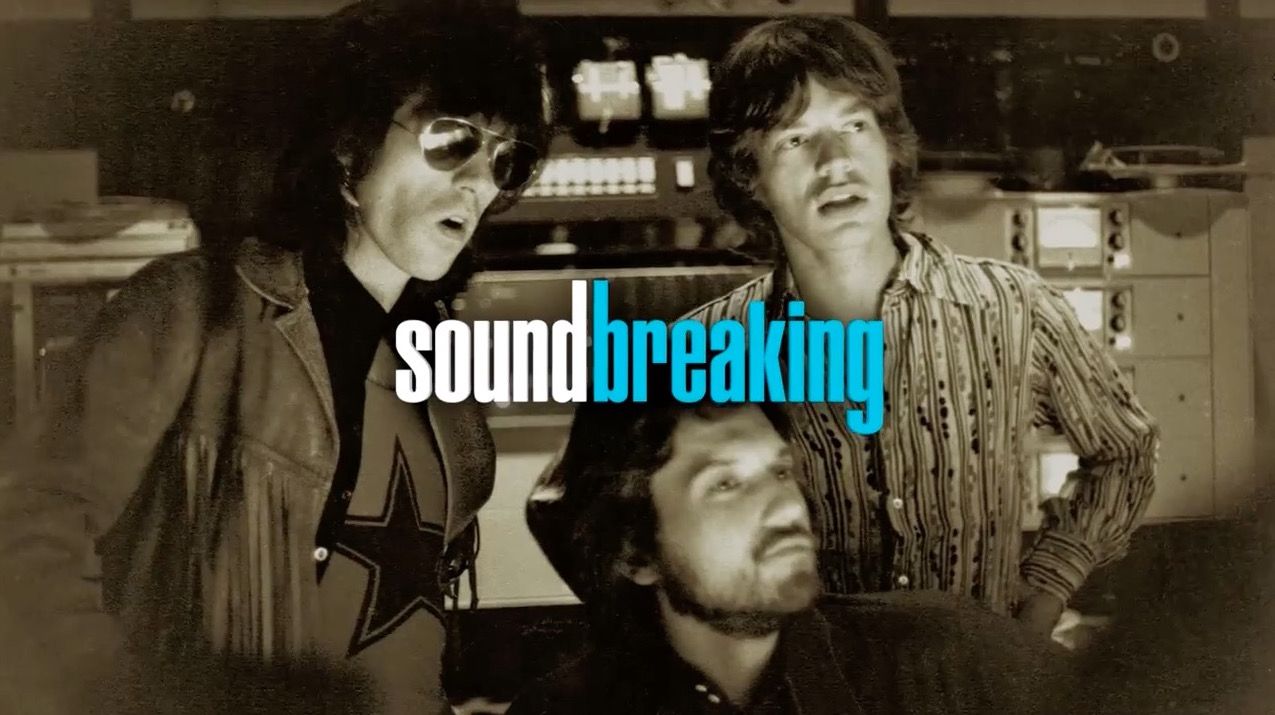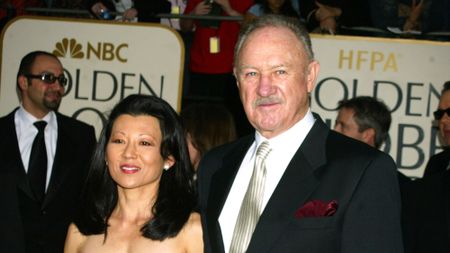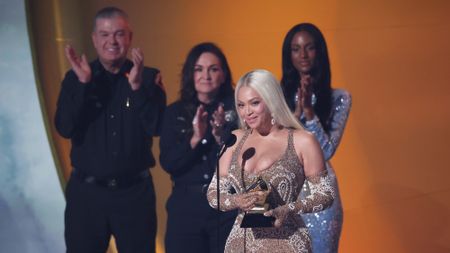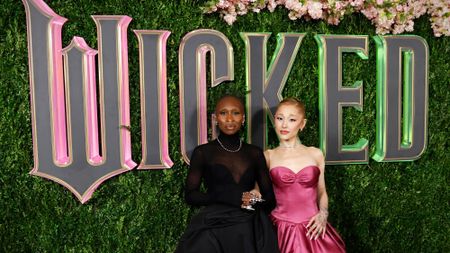Before Sir George Martin died, he helped explain how music is made in Soundbreaking. Get excited.


Sir George Martin, the producer remembered as "the fifth Beatle" for his pivotal work shaping the Fab Four's recorded sound, died March 8. But for the past five years, he and his son, Giles, worked with documentary filmmakers Jeff Dupre and Maro Chermayeff on a PBS series, Soundbreaking: Stories From the Cutting Edge of Recorded Music. The first eight episodes air on PBS in November, but Dupre and Chermayeff debuted the first two at South by Southwest Film on Monday night. The first episode focuses on the musicians and producers, notably George Martin, Phil Spector, Rick Rubin, and Dr. Dre, while the second looks more at how the recording studio and new technologies changed recorded music from a snapshot to a painting.
The result is a fascinating peek at how music is put together, told without a narrator by some of the most iconic figures in rock, pop, and hip hop. The directors said they interviewed more than 200 people, and had to leave a lot of footage on the cutting-room floor. But the series isn't just for studio rats and music geeks — it aims to change how you look at and listen to recorded music by pulling back the curtain on some songs you know and love.
"Soundbreaking afforded me the opportunity to tell the story of the creative process of so many of the artists I have worked with throughout my life," Martin said in a statement. And the cooperation of Martin and the remaining Beatles, Paul McCartney and Ringo Starr, was pivotal in getting the all-star group of musicians and producers on board, Dupre and Chermayeff said Monday night. If you aren't at SXSW, you won't be able to watch Soundbreaking until November, but you can watch some of the footage in this tribute to Martin the Soundbreaking team put together after his death.
Subscribe to The Week
Escape your echo chamber. Get the facts behind the news, plus analysis from multiple perspectives.

Sign up for The Week's Free Newsletters
From our morning news briefing to a weekly Good News Newsletter, get the best of The Week delivered directly to your inbox.
From our morning news briefing to a weekly Good News Newsletter, get the best of The Week delivered directly to your inbox.
Martin changed how music is made. Thanks to Soundbreaking and PBS, he still gets to help explain how he and other musical legends broke rules and conventions to build masterpieces. If the first two episodes are any indication, it will be worth the wait.
Sign up for Today's Best Articles in your inbox
A free daily email with the biggest news stories of the day – and the best features from TheWeek.com
Peter has worked as a news and culture writer and editor at The Week since the site's launch in 2008. He covers politics, world affairs, religion and cultural currents. His journalism career began as a copy editor at a financial newswire and has included editorial positions at The New York Times Magazine, Facts on File, and Oregon State University.
-
 Today's political cartoons - March 30, 2025
Today's political cartoons - March 30, 2025Cartoons Sunday's cartoons - strawberry fields forever, secret files, and more
By The Week US Published
-
 5 hilariously sparse cartoons about further DOGE cuts
5 hilariously sparse cartoons about further DOGE cutsCartoons Artists take on free audits, report cards, and more
By The Week US Published
-
 Following the Tea Horse Road in China
Following the Tea Horse Road in ChinaThe Week Recommends This network of roads and trails served as vital trading routes
By The Week UK Published
-
 New Mexico to investigate death of Gene Hackman, wife
New Mexico to investigate death of Gene Hackman, wifespeed read The Oscar-winning actor and his wife Betsy Arakawa were found dead in their home with no signs of foul play
By Peter Weber, The Week US Published
-
 Giant schnauzer wins top prize at Westminster show
Giant schnauzer wins top prize at Westminster showSpeed Read Monty won best in show at the 149th Westminster Kennel Club dog show
By Peter Weber, The Week US Published
-
 Beyoncé, Kendrick Lamar take top Grammys
Beyoncé, Kendrick Lamar take top GrammysSpeed Read Beyoncé took home album of the year for 'Cowboy Carter' and Kendrick Lamar's diss track 'Not Like Us' won five awards
By Peter Weber, The Week US Published
-
 The Louvre is giving 'Mona Lisa' her own room
The Louvre is giving 'Mona Lisa' her own roomSpeed Read The world's most-visited art museum is getting a major renovation
By Peter Weber, The Week US Published
-
 Honda and Nissan in merger talks
Honda and Nissan in merger talksSpeed Read The companies are currently Japan's second and third-biggest automakers, respectively
By Peter Weber, The Week US Published
-
 Taylor Swift wraps up record-shattering Eras tour
Taylor Swift wraps up record-shattering Eras tourSpeed Read The pop star finally ended her long-running tour in Vancouver, Canada
By Peter Weber, The Week US Published
-
 Drake claims illegal boosting, defamation
Drake claims illegal boosting, defamationSpeed Read The rapper accused Universal Music of boosting Kendrick Lamar's diss track and said UMG allowed him to be falsely accused of pedophilia
By Rafi Schwartz, The Week US Published
-
 'Wicked' and 'Gladiator II' ignite holiday box office
'Wicked' and 'Gladiator II' ignite holiday box officeSpeed Read The combination of the two movies revitalized a struggling box office
By Peter Weber, The Week US Published
